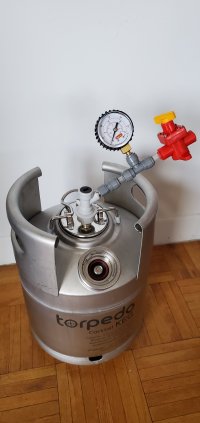x3la
Well-Known Member
I'm about to condition in a Sankey keg by adding priming sugar.
My Coupler is fitted with Ball Locks on both gas in and liquid out. I have a Spunding Valve with a ball lock connector.
Why is it that the gas in, by means of removing the Gas Input Check Valve/Duckbill is always cited as the correct port to install the Spunding Valve on? Is there something preventing this from working with the liquid out port?
My Coupler is fitted with Ball Locks on both gas in and liquid out. I have a Spunding Valve with a ball lock connector.
Why is it that the gas in, by means of removing the Gas Input Check Valve/Duckbill is always cited as the correct port to install the Spunding Valve on? Is there something preventing this from working with the liquid out port?






![Craft A Brew - Safale S-04 Dry Yeast - Fermentis - English Ale Dry Yeast - For English and American Ales and Hard Apple Ciders - Ingredients for Home Brewing - Beer Making Supplies - [1 Pack]](https://m.media-amazon.com/images/I/41fVGNh6JfL._SL500_.jpg)






















































